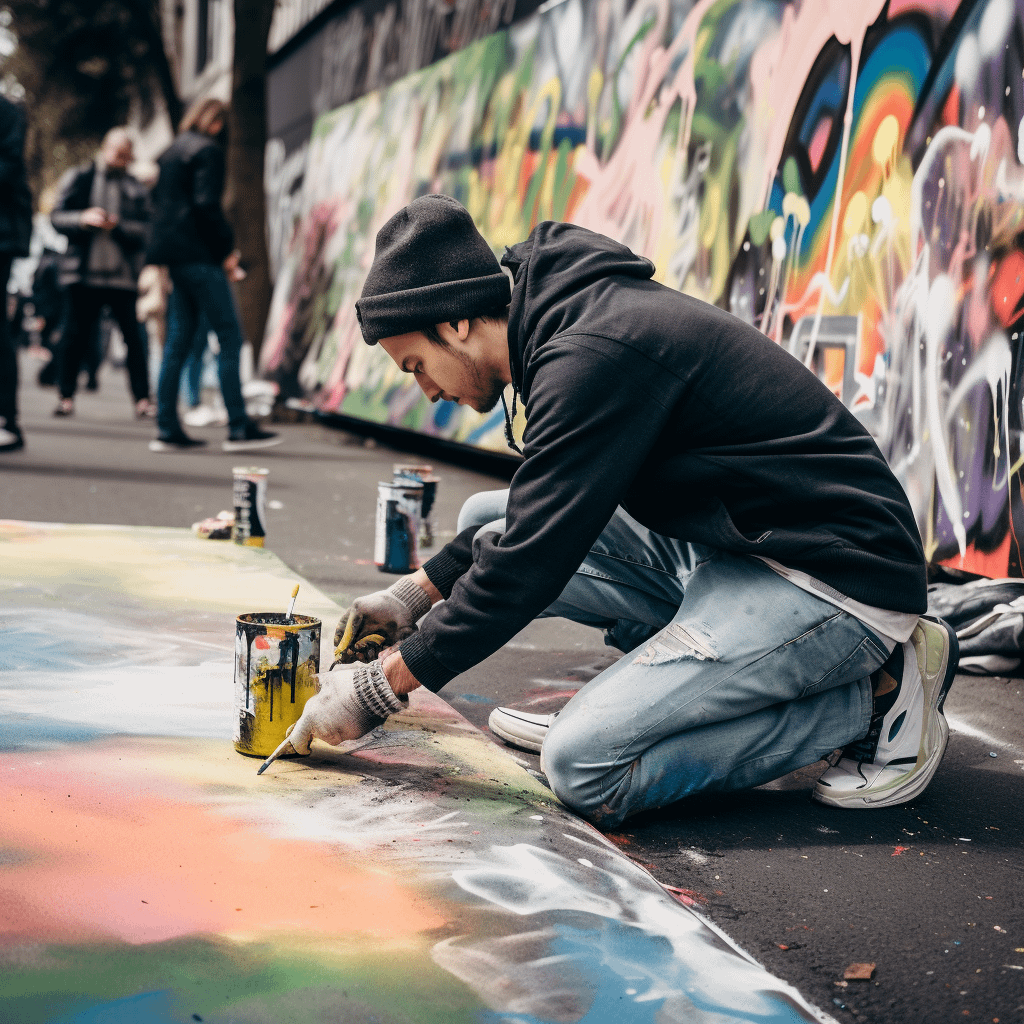The history of graffiti over the last several decades is a dizzying journey, going from a top urban nuisance in the 1980s to street artists and their work being mythologized and honored in films and museums. And to be a clear, there is a line, if sometimes inscrutable, between wanton defacement of another person’s property and street art that provides value to the culture and day-to-day life of a neighborhood and city. And, of course, there is certainly a clear difference between unauthorized and therefore illicit art on property (the dictionary definition of “graffiti”) and street art that is authorized by the property owner.
But whether you are Banksy or a kid with a spray paint can and a lookout, there is also the question of what ownership rights you have in the street art you leave behind. Specifically, if another party uses your art (which is presumably there for all the world to see) can you sue them for that appropriation of your work?
This was a question addressed in the recent case of Adrian Falkner v. General Motors LLC, filed in January 2018 in the Central District of California and addressed on appeal by the Ninth Circuit in September 2018, only to be remanded back to the district court for further factual determinations.
Smash137 Gets His Day in Court
The plaintiff Adrian Falkner sued General Motors for using a portion of a mural he had painted on a parking garage in Detroit to promote an art gallery without his permission and in a way that only showed part of the mural and left off his signature and other copyright information. Specifically, in 2016, an automotive photographer named Alex Bernstein had photographed a Cadillac with one wall of Falkner’s two-wall mural in the background and General Motors had used the photo depicting the mural in a social media post. Notably, Falkner’s moniker “Smash137” was left out of the photo, and a plaque containing copyright information was included in the photograph but was too small to read.
Falkner sued for copyright infringement as well as “falsification, removal, and alteration of copyright management information in violation of the Digital Millennium Copyright Act.” To the second claim of removal or alteration of copyright information, the court found for General Motors, ruling that cropping or otherwise not rendering copyright information in a photo (intentional or otherwise) does not constitute removal or alteration of copyright information, such as a court might find with ripping out the copyright page of a book or editing out copyright warnings on a DVD.
The court provided further discussion on the question of whether copyright infringement occurred. Notably, the issue of whether street art itself could be protected against copyright infringement was barely addressed, with the implicit message being that it could indeed be protected. The focus of the Ninth Circuit’s opinion was instead on whether the mural’s placement on a parking garage rendered it part of an architectural work such that no copyright protection would attach.
Are Murals Part of an Architectural Work?
Under the federal Copyright Act, “pictorial, graphic, and sculptural” (PGS) works are indeed protected, but architectural works have more limited protections. Specifically, under federal law, “architectural work that has been constructed does not include the right to prevent the making, distributing, or public display of pictures, paintings, photographs, or other pictorial representations of the work, if the building in which the work is embodied is located in or ordinarily visible from a public place.”
Thus, the question for the court became whether the mural itself was 1) considered part of the architectural work of the parking garage (and, yes, a parking garage is considered an architectural work) such that the artist could not prevent others from distributing photos of his work; or 2) whether the mural itself was distinct from the architectural work.
In examining this question, the court discussed a previous Ninth Circuit case from 1998 which presented a claim from a designer who claimed the film “Batman Forever” had improperly used depictions of his work on an outdoor space connected to a building in downtown Los Angeles. There, the court found that because the outdoor space was designed in conjunction with the design of the building and served the purpose of directing the flow of foot traffic to the building, it was part of the architectural work itself and therefore the designer did not have the right to prevent others from using pictorial depictions of it.
The Ninth Circuit did not itself determine whether Falkner’s mural was to be considered part of the architectural work of the parking garage, and instead sent that question back to the trial court to make that determination.

Where creative minds come together
A takeaway for street artists is to understand that they can indeed obtain copyright protection for their work in at least some cases, but courts may take more complex approaches to determining the scope of the protection than might be expected. Stay tuned to The Fried Firm’s blog for more updates on developments in the ever-changing world of copyright law.



